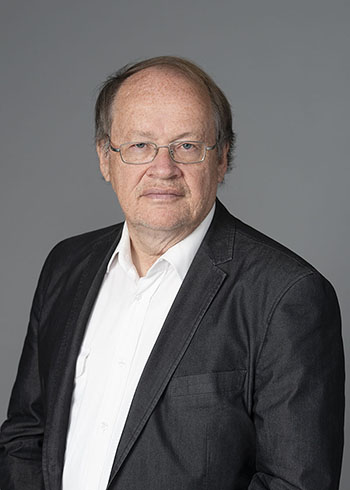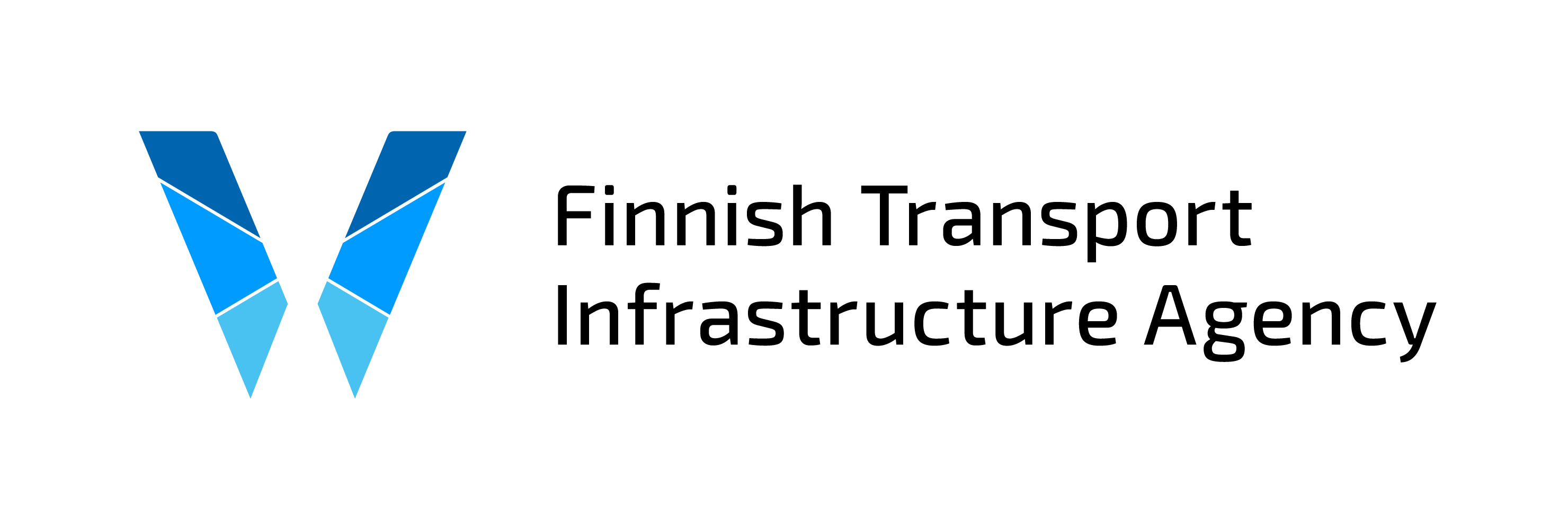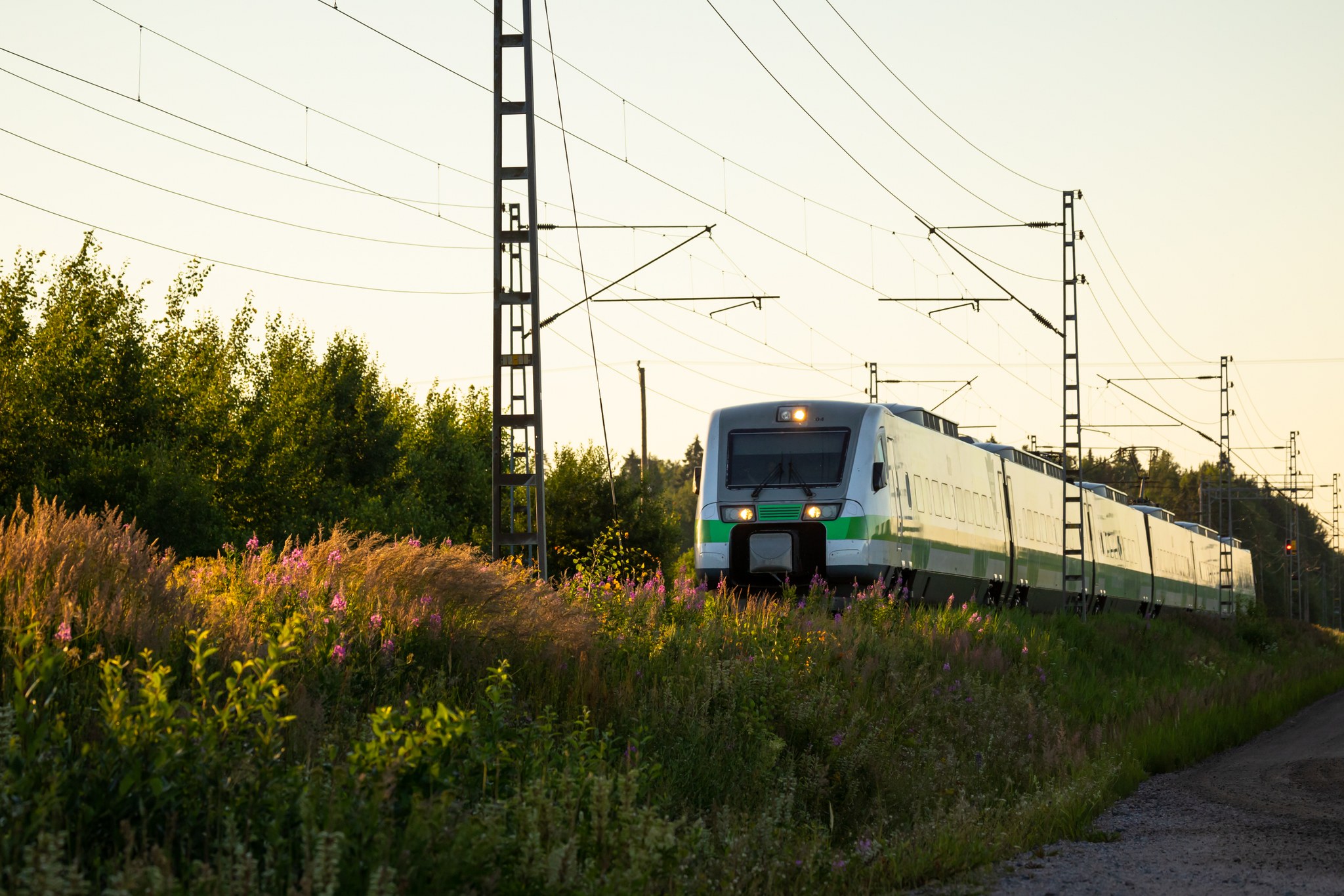Railway traffic has not been without problems this summer. Railway traffic was disrupted by, for example, prolonged track work at Midsummer. In early August, a cable failure caused by vandalism was the reason for delayed trains. Both cases were regrettable and caused a great deal of damage to train traffic.
However, every cloud has a silver lining. We learn from mistakes to avoid similar disturbances in the future.
“We already have various ways to prepare for possible setbacks in work done during track service interruptions. For example, there are usually spare machines for machinery critical to the work site. In future track work, the Finnish Transport Infrastructure Agency will pay more attention to keeping to schedules, preparing for surprises and providing information when problems arise,” says Markku Nummelin, Railway Traffic Director at the Finnish Transport Infrastructure Agency.
Challenges of single-track railway lines
The Finnish railway network, which is approximately 5,900 kilometres long, consists largely of single-track lines. If the track is blocked for one reason or another – and there is no way around the problem – a bottleneck is created. This has been the case when, for example, the electrified railway network or the rolling stock have suffered damage on single-track lines. It is possible to remedy single-track bottlenecks by, for example, building more bypass points, but these solutions are very expensive.
“The section between Kokkola and Ylivieska was congested for a long time, as southern and northern train traffic met there. We made traffic between the cities more efficient by building a double track, which was completed in 2017. The tracks are at a great lateral distance from each other. As a result of the project, trains can now encounter each other more easily, the capacity of railway traffic grew considerably and operational reliability improved,” Nummelin explains.
“For a long time, the section between Kokkola and Ylivieska was a bottleneck where southern and northern train traffic met. As a result of the project completed in 2017, trains can now encounter each other more easily, the capacity of railway traffic grew considerably and operational reliability improved,” Nummelin explains.
Finland still has several areas where a single-track line hinders train traffic. For example, the line between Luumäki and Joutseno is often congested due to the high volume of raw timber transportation. There is also a shortage of bypass points on the Savo and Karelia lines.

Congested railway lines
There may also be congestion on multi-track sections if there is a lot of traffic. Busy railway lines have less room for manoeuvre in case of problems, and arranging the interruptions required for maintenance is difficult. For example, the section between Helsinki and Kerava is currently congested, especially for long-distance trains. The planned Lentorata airport railway would contribute to solving this problem. No decisions have been made on the implementation of the project.
Of course, some problems have also been corrected over time.
“The project to improve the functionality and efficiency of the Helsinki railway yard was completed last year. In the project, the Finnish Transport Infrastructure Agency built more turnouts and junction lines at the Helsinki railway yard. We also improved safety equipment and reduced signal intervals. As a result of these changes, the Helsinki railway yard is less sensitive to disruptions and has more room for trains to travel than before. This benefits all railway traffic in Finland,” Nummelin says.
Improvements to the Tampere railway yard are also planned. According to the plans, a new intermediate platform for passenger traffic and better connections for train passengers throughout the station area will be built in Tampere.
“We have already removed many of the worst bottlenecks, but there is still plenty to do,” says Nummelin.
Safety equipment and systems matter
Safety is the starting point in railway traffic. The purpose of the track safety equipment is to ensure that, for example, trains do not collide with each other. How is it done? The safety equipment reserves a certain section of the railway line for only one train. Another train cannot enter the same line section until the previous train has left. The shortest distance between trains is over a kilometre, but the distance can also be considerably longer.
The safety equipment is constructed in a way that they do not allow uncertainty. If the line is not known to be free for certain, the train is not allowed to enter the line. Due to the cable damage in August, the information between the safety equipment was not properly transmitted, and safe train traffic had to be ensured manually instead of automation. This slowed down traffic significantly.
The construction of new safety equipment can contribute to making railway traffic more efficient. The more frequently the safety equipment is placed, the closer the trains can travel to each other safely. The safety equipment updates have improved the efficiency of train traffic on the Riihimäki–Seinäjoki and Kotka–Kouvola lines, for example.
“We are also developing new ways to guarantee safe train travel. The Digirail project’s objective is to build a radio-based system in Finland that will allow signalling directly to the locomotive without fixed visible signals. On busy lines, the new system would allow trains to move closer to each other. This would increase capacity on the line,” Nummelin says.
Trains and people
In addition to problems caused by infrastructure, train delays may be caused by problems in the rolling stock or the availability of staff. For example, the railway disruptions at Midsummer affected train traffic also because the train staff’s shifts ended, and they had to be replaced with new staff.
“A train running late can also delay other trains. If one train is running late, other trains may have to wait for it at the station to allow passengers to make their transfer connections. On single-track lines, organising train encounters can also be difficult,” Nummelin says.
How about elsewhere?
In terms of the punctuality of train traffic, Finland is of good European standard. Sweden, for example, has the same level of punctuality as we do. But are things even better somewhere else?
“Japan and Switzerland are the number one countries in punctuality,” Nummelin says and continues: “I have visited both countries to examine their train traffic. The reason for their efficiency is preparedness. Especially in Japan, they have at least two pieces of nearly all systems and devices. If a device breaks down, there is a standby. They have also invested in maintenance. The number of staff always on call is considerably higher than in Finland. In Switzerland, assistance trains are constantly on call and ready for departure at key locations. "
Finland has also learned from the examples set by Switzerland and Japan.
“With current resources, we cannot copy the operating methods of these countries, but we can learn,” Nummelin says.

